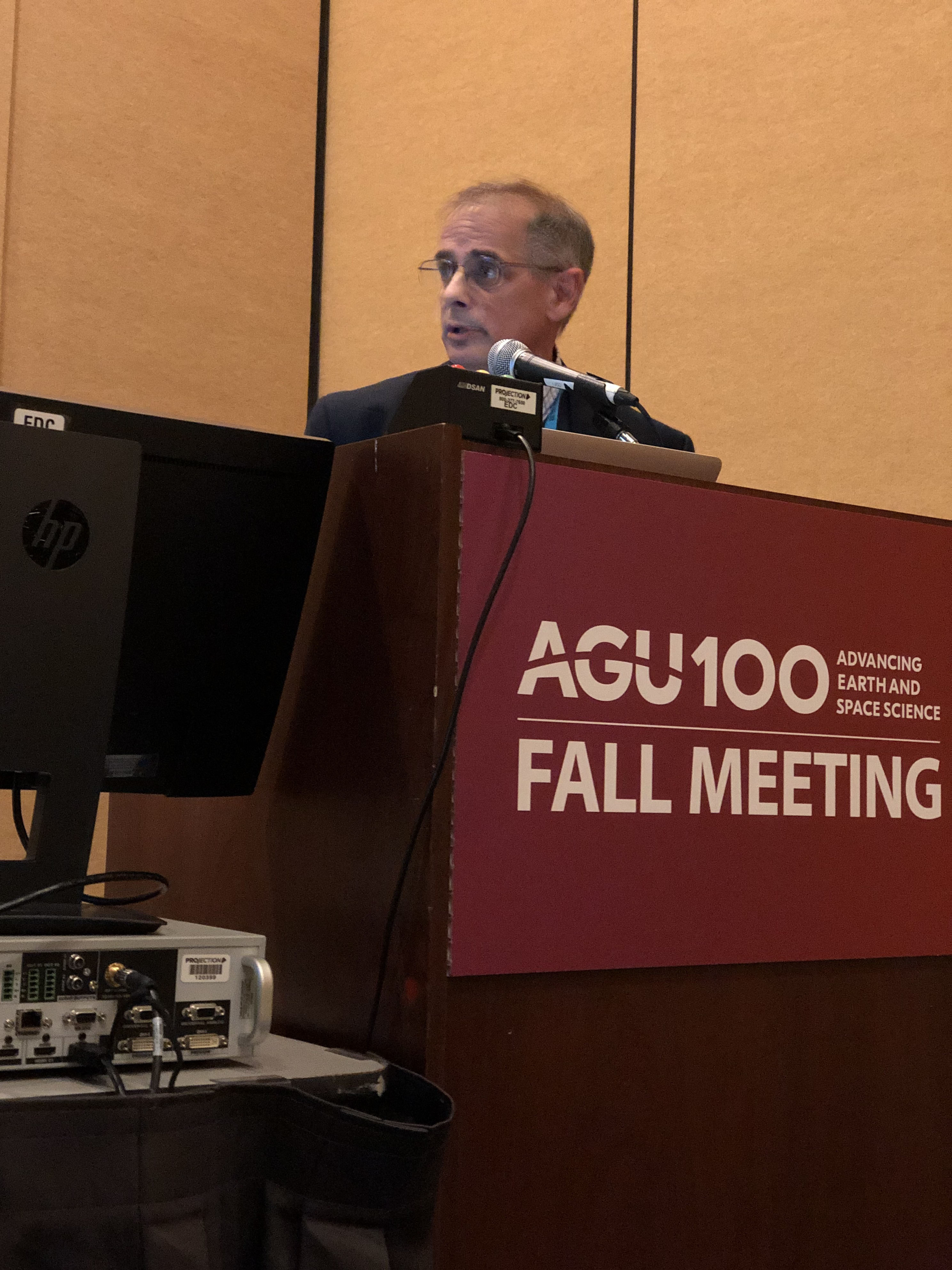Showcasing ARM’s Scientific Impact and Getting Feedback for ARM’s Future at 2019 AGU Meeting
Published: 20 January 2020

“Celebrate the past and inspire the future”—the theme for the centennial meeting of the American Geophysical Union (AGU) was appropriate for how the Atmospheric Radiation Measurement (ARM) user facility showed up during this annual conference. With about 25,000 attendees, AGU is the largest international earth and space science meeting in the world.
“ARM has been collecting atmospheric data for more than 27 years,” says Jim Mather, ARM’s technical director. “Each year, we build on ARM’s impact with data being collected 24/7 and new field campaigns, but it can take years before we see the resulting scientific progress. At the same time, we are constantly working to take the pulse of the science community to ensure that the facility will meet research needs in the decade to come.”
Mather adds, “AGU is a great place to showcase what ARM has accomplished and get valuable opinions on where we are going.”
The Celebration
ARM data were featured in more than 100 posters and presentations at the 2019 AGU Fall Meeting, which was held December 9 to 13 in San Francisco, California. The scientific impact of ARM, a U.S. Department of Energy (DOE) scientific user facility, can be found in summaries of the workshops, presentations, posters, and more.
Among the ARM campaigns featured at AGU, at least 12 presentations and posters used data from the Aerosol and Cloud Experiments in the Eastern North Atlantic (ACE-ENA) field campaign, which ran in summer 2017 and winter 2018 in the Azores, an island chain off the coast of Portugal. The campaign sought better understanding of aerosols (tiny particles in the air) and low clouds in this remote marine environment by pairing measurements from ARM’s Eastern North Atlantic atmospheric observatory with data from ARM’s now-retired Gulfstream-159 (G-1) research aircraft. Early data analysis after the campaign confirmed several key seasonal variations in aerosol and cloud properties.

Another campaign that boasted at least nine AGU presentations and posters was Observations and Modeling of the Green Ocean Amazon (GoAmazon2014/15). During GoAmazon, which ran from January 2014 to November 2015, scientists studied the atmosphere above and around Manaus, a city of more than 2 million people in central Brazil, during both the wet and dry seasons. Research from the campaign is shedding light on the interactions of pristine forest air and urban pollution.
Other ARM campaigns with numerous presentations and posters included the Cloud, Aerosol, and Complex Terrain Interactions (CACTI) field campaign, which researched the life cycle of convective storms in Argentina from October 2018 to April 2019, and Holistic Interactions of Shallow Clouds, Aerosols, and Land-Ecosystems (HI-SCALE), which made use of ARM’s Southern Great Plains atmospheric observatory and the G-1. HI-SCALE looked at a wide range of factors that could influence cloud development.
DOE ARM Program Manager Sally McFarlane participated in a media workshop on the Multidisciplinary Drifting Observatory for the Study of Arctic Climate (MOSAiC) expedition, which kicked off in September 2019 and runs through October 2020. MOSAiC, billed as the largest research expedition in the central Arctic, involves a German icebreaker frozen into the arctic ice and 600 scientists, technicians, and logicians from 20 countries. The region is experiencing dramatic changes, including surface temperature increases that are twice the rate of the global average.
The Future

Two ARM-related town halls were held, geared toward getting feedback from the larger scientific community. Mather presented to an audience of more than 40 on ARM’s efforts to update its Decadal Vision strategic plan. The engaging talk used real-time survey software to get immediate responses from audience members to a half-dozen questions geared toward inspiring ARM’s future.
A second town hall was co-hosted by DOE and the National Oceanic and Atmospheric Administration (NOAA) to look at observations, platforms, and campaigns in the Alaskan Arctic. ARM’s North Slope of Alaska atmospheric observatory in Utqiaġvik (formerly Barrow) is providing data about cloud and radiative processes at high latitudes and has a close partnership with the adjacent NOAA facility.
Staff from Oak Ridge National Laboratory in Tennessee also gathered live feedback during tutorials at the ARM exhibit on the new ARM Data Discovery browser, which is being finalized for distribution early in 2020. More than 25 scientists from organizations across the country volunteered at the ARM exhibit, using the time as “office hours” to talk about their research and connect more than 600 people to ARM resources.
Preparations are already underway for the 2020 AGU Fall Meeting, which will be held December 7 to 11 in San Francisco.
Keep up with the Atmospheric Observer
Updates on ARM news, events, and opportunities delivered to your inbox
ARM User Profile
ARM welcomes users from all institutions and nations. A free ARM user account is needed to access ARM data.


















